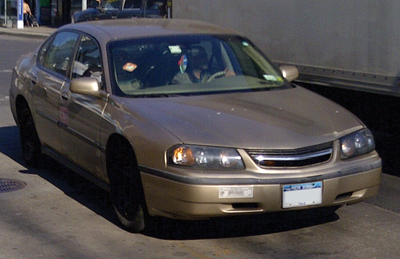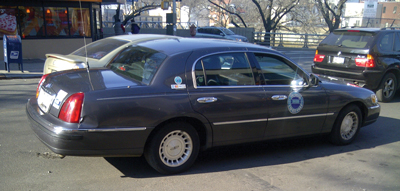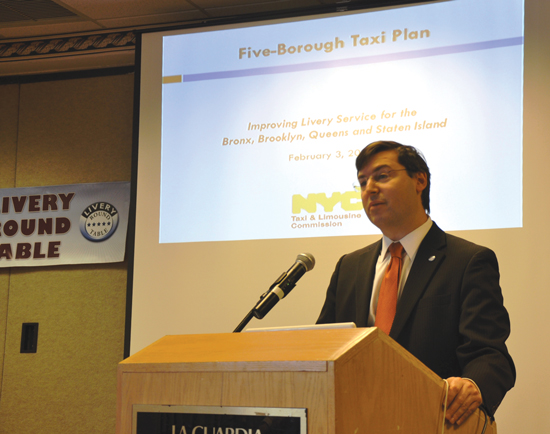 COMMISSIONER’S LETTER
COMMISSIONER’S LETTER COMMISSIONER’S LETTER
COMMISSIONER’S LETTER
By New York City Taxi and Limousine Commission Commissioner/Chairman David Yassky
The following questions were delivered to the Taxi Limousine Commission by TLC Magazine on 16 February 2011 and just prior to the publication of the March 2011 edition of TLC Magazine. Deputy Commissioner Allan Fromberg's immediate reply was received by TLC Magazine shortly thereafter and follow the questions in blue. We understand that the Commissioner's office is presently in the research and examination phase of the Five Borough Taxi Plan (5BTP). We have been made aware that the following questions and other questions relative to the plan will continue to be discussed and evaluated during this period. Editor 1. Will the individual livery license = a transferable medallion for value? No – they will NOT be transferable assets a la medallions.
No, they will likely be a common color not specific to the borough.
There will be no caps. We anticipate livery operators to remain operating as they are now which is by pre-arranged service. Presently, there are 22,000 registered livery vehicles in the city. As many people will continue to prefer pre-arranging doorstep to doorstep service there's no reason to believe we'll see numbers even close to approaching the 22,000 potential vehicles conducting business by street hails.
No.
Presently, Manhattan livery bases conduct business north of 96th Street and on the lower east side. Our data shows that the great preponderance of this business is by pre-arranged service. We do not anticipate this to change at all. We do not anticipate the easily identifiable colored livery vehicles to compete with the yellow taxi in the traditional yellow taxi service areas.
Only through pre-arrangement, as today, but not by hail.
Livery vehicles are, in fact, now being inspected by TLC. |
It shouldn't come as a surprise that this month's column is about Mayor Bloomberg's recently announced Five Borough Taxi Plan (5BTP) – the plan to allow appropriately licensed and equipped livery cars ("borough taxis") to accept street hails outside Manhattan.
If you don't know the details of the plan here they are:
Yellow taxis would still have the right to pick up street hails anywhere in the five boroughs and the airports, though to be frank, very few leave Manhattan today. You've probably heard the statistics many times already:
All of which results in underserved demand outside Manhattan. I say underserved, but it's more precise to say inadequately served because, as you know, some of this demand is currently met by illegal livery pickups. And for those folks who are turned off by the "sketchy" nature of licensed or unlicensed livery pickups, a particular deterrent for women, there is no street hail option outside Manhattan. The cars often lack adequate insurance, and many drivers lack the proper license. The cars also lack meters, and passengers are required to negotiate the fare on the spot. People unfamiliar with the "going rate" in a particular neighborhood often get ripped off, and even experienced passengers generally find haggling unpleasant, –so much so that many people simply refuse to hail gypsy cabs in order to avoid it. Needless to say, this is unsustainable and this plan addresses it.

Change is hard.
I have already heard significant concern from many in the industry who are concerned about the impact on their bottom line. That's understandable. Change is never easy, and is often risky. But I am convinced this is change for the better, and I hope the TLC's industry partners will ultimately agree.
When hybrid taxis first came on the scene there was tremendous opposition from almost every quarter of the industry. There were claims from these same fleet owners that these cars wouldn't be able to handle the unique New York City terrain and the extreme demands placed on taxis, that drivers wouldn't like them because they wouldn't ride as smoothly as the Crown Vics, and that passengers wouldn't like them because they weren't as spacious. Today, over a third of the fleet has voluntarily opted for hybrid taxis.
The same happened with TPEP. Tremendous opposition to something new/different was followed by gradual acceptance and, eventually, widespread adoption. In fact, the most recent data suggests that credit card usage represents almost 50% of all taxi fares with credit card tips averaging 19%, a nice premium over the typical cash tip. It's a technology that makes for happier passengers which makes for more successful drivers.
And I believe the same will be the case with borough taxis. It's the right thing to do and it's the smart thing to do. And even though the taxi fleets will sue and lobby hard to protect their $850,000 medallions, as always, in the end, what's good for the customer is good for drivers, and what's good for drivers is good for the industry.

Some dial-a-car companies have also expressed concern that they will lose business if non-Manhattanites gain access to legitimate taxi service. I agree that car service companies generally provide excellent service, and we want to minimize disruption to that sector of the industry, but ultimately, the customer must come first.
Smart business people should be able to turn the new rules into an opportunity by expanding their business to provide both dial ahead and street hail service. And our rules will ensure that traditional car service companies can continue to do business just as they do today if that is their preference.
It will be up to them whether to offer street hail service or not.
It's the enforcement!
In conversations with fleet owners and drivers' representatives one thing has become crystal clear: much of the opposition to borough taxis has nothing to do with the "outer" boroughs. It's all about Manhattan and the perceived threat to the exclusive yellow right to street hails there. The fear is that if these borough taxis are seen as legitimate street hail vehicles outside Manhattan what's to stop them from picking up street hails on 23rd and Avenue of the Americas? The answer – plain and simple – is increased enforcement. A central component of 5BTP is increased enforcement utilizing more cops on the street with better technology in their hands, and the use of GPS locators in borough taxis to ensure they are where they're supposed to be. And the licensing fees for borough taxis are what will pay for that increased enforcement.
All of this will involve a major change to our rules and the way the industry works. And we won't be able to implement this overnight. I believe there's lots of room for input and discussion and I look forward to working with industry stakeholders to implement it in the best way possible. Please send me your thoughts at TLCCommissioner@tlc.nyc.gov.

Commissioner Yassky gave_a presentation on 5BTP at the recent Livery Roundtable conference.